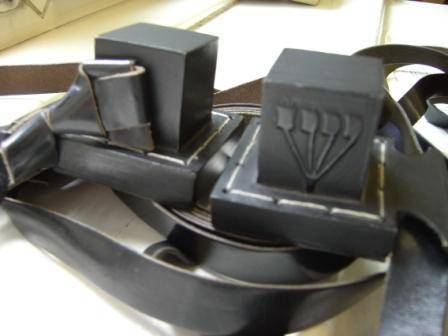Tefillin: they're the bomb
Wrapping up a midair scare
By Michael Orbach
Updated for the issue of Jan. 29, 2010 / 14 Shvat 5770 (originally published Jan. 21)
There’s always a bright side, even to the much over-discussed in-flight commotion over a pair of tefillin and a teenage boy last week.
“This was a great opportunity for people to learn what tefillin are,” said Rabbi Motti Seligson of Chabad.org.
“Instead of kvetching, Jews all over ... just explained what tefillin were and used it as an opportunity.” The tefillin site on Chabad.org has received a “huge amount of traffic,” Seligson said, ever since 17-year-old Calev Leibowitz of White Plains, NY was late getting to Grandma’s house in Louisville, KY last Thursday.
His plans were interrupted after a flight attendant aboard U.S. Airways Express flight 3709 out of LaGuardia became alarmed when Leibowitz wrapped himself in small black boxes and leather straps in order to say his morning prayers.
She alerted the captain who then asked air traffic controllers to summon the FBI to meet the plane in Philly, where it made an unscheduled landing. Leibowitz and his 16-year-old sister were handcuffed at gunpoint and taken off the plane. The two teens were released after being briefly questioned by the FBI. They continued on to Louisville, where their grandmother, Frances Winchell, lives. FBI Special Agent J.J. Klaver described the boy as “very cooperative and very respectful.”
The FBI and the Philadelphia police searched the aircraft.
The Jewish world has taken the attention in stride. Israeli airline El Al released an advertisement this week featuring a pair of tefillin and the tagline, “Our cabin crew will know how to ‘defuse’ them.”
Tefillin, a six-day-a-week morning ritual for Jewish males age 13 and over, contain biblical passages handwritten on parchment. They are not worn on the Sabbath and major Jewish holidays. In light of the recent incident involving the underwear bomber, however, airline passengers who observe the commandment to don Tefillin may now deem it safer to do so in shul or in private, before flying, but not on an aircraft.
“Well, it’s pretty obvious that someone who’s never seen tefillin before could easily be spooked by them,” observed Rabbi Avi Shafran, director of public affairs at Agudath Israel of America. “Even the Gemara says that they inspire awe in others. These days, the sight of anyone strapping something on their arm and head — little black boxes yet — can reasonably be expected to cause consternation on a plane.”
Rabbi Shafran said that when he flies, he makes sure to inform his seatmate and the flight attendant that he’ll be praying and what it involves.
“I think that is prudent behavior for anyone these days,” he said.
Last year, Agudath Israel and the Orthodox Union worked with the Transportation Safety Administration to inform TSA agents that Jewish passengers may be carrying seemingly alarming but harmless parcels containing tefillin on airline flights. And according to a briefing paper provided to the agents before the Sukkot holiday, a small army of passengers would be seen boarding planes “carrying ‘spear-like’ palm fronds.”
This isn’t the first time that tefillin have caused a scare.
In 2007, police in Chicago boarded a commuter train after being alerted to a passenger who was putting on “a miner’s hat with a box in place of a lamp and wires sticking out of it,” according to the Chesterton Tribune.
“In New York City,” explained Transit Police Chief Bob Byrd, “nobody would have looked twice at the gentleman. Here, we appreciate the passengers’ response.”
Yaakov Levy, an Israeli citizen who traveled across the United States with his family in 2004, had a similar experience outside a Dunkin’ Donuts in Connecticut, a state with an Orthodox Jewish senator, Joe Lieberman. He put on his tallit — prayer shawl — and tefillin to say his morning prayers and minutes after he was finished, Levy said two police officers confronted him.
“They asked me, ‘Are you Muslim?’” Levy recalled.
After he explained that he was Jewish, the officers seemed puzzled.
“Are you sure you’re not a Muslim?” they asked again. When they were finally convinced that he was, in fact, not a Muslim, they apologized, but had one last question about his tallit.
What was that cape you were wearing?
“They thought we were like Superman,” Levy’s wife Hannah related.
America isn’t the only country where unfamiliar religious items can arouse suspicion. Dr. Yosef Burg, the late Israeli politician who passed away in 1999, was said to have had a similar difficulty in Upper Volta, then in French West Africa; today named Burkina Faso. While riding in a taxi he saw that he had almost missed the time for morning prayers, according to a story related online by Rabbi Uri Dasberg of Israel’s Zomet Institute. So he took out his tefillin and put them on. The driver immediately diverted the cab to the nearest police station, certain that he had captured a spy in the middle of a radio broadcast.

 48.0°,
Overcast
48.0°,
Overcast 







